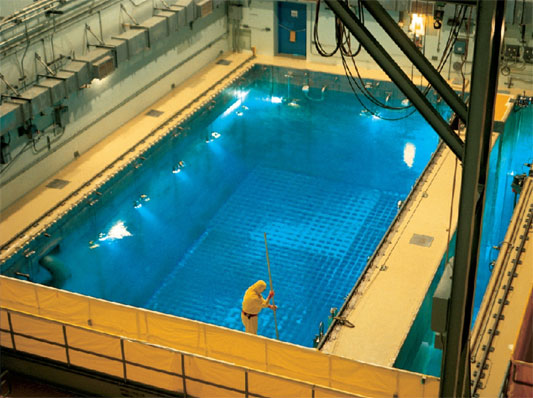 Improving our understanding of the risks that nuclear technologies and materials may pose to human and global security and offering sound technical options to reduce or eliminate these risks have been recurring themes of articles published in this journal. This issue contains two important new assessments with implications for the risks associated with uranium enrichment and spent nuclear fuel storage.
Improving our understanding of the risks that nuclear technologies and materials may pose to human and global security and offering sound technical options to reduce or eliminate these risks have been recurring themes of articles published in this journal. This issue contains two important new assessments with implications for the risks associated with uranium enrichment and spent nuclear fuel storage.
Mark Walker and Robert Goldston in "Timely Verification at Large-scale Gas Centrifuge Enrichment Plants" take up the challenging problem of understanding the potential for a modern commercial-scale, gas centrifuge uranium enrichment plant to quickly produce large amounts of highly enriched uranium hexafluoride with an enrichment suitable for weapons use (90 percent uranium-235). They find that enrichment plants with capacities ranging from 0.5-4 million kgSWU/year (a range that broadly encompasses commercial plants operating in Britain, China, France, Germany, the Netherlands, Russia, and the United States) could produce between about 3 and 30 weapons worth of material in approximately one week, if a month's worth of previously produced low-enriched uranium hexafluoride feedstock were available. This problem will become even more serious if enrichment plant capacities continue to become larger - the largest plant in the world, at Novouralsk in Russia, is already over 13 million kgSWU/year. To enable the international safeguards regime to more effectively monitor centrifuge enrichment plants with this kind of break-out capability, Walker and Goldston propose a system of flow measurements on uranium hexafluoride gas, remotely indicating seals on known ports where the gas could be withdrawn, and hydrogen fluoride detectors to look for the installation and operation of undeclared ports. They also suggest fixing unattended neutron and gamma detectors at gas feed and withdrawal stations and mounting of these detectors on robot rovers that would move through key areas of the enrichment plant to detect undeclared gas feed and withdrawal.
It has long been known that nuclear reactors carry the risks of catastrophic accidents. There is a growing understanding of the possibly even more consequential risks posed by nuclear reactor spent fuel - some of the key articles have been published in this journal. Frank von Hippel and Michael Schoeppner's article "Economic losses from a fire in a dense-packed U.S. spent fuel pool" (Free PDF) challenges the US Nuclear Regulatory Commission (NRC) assessment of the consequences and costs of a fire at a nuclear power reactor spent fuel pool following a loss of water. The NRC calculated the difference between the consequences of a fire in a dense-packed pool and a fire in a reduced density pool where fuel cooled for more than five years has been removed; the case study was the Surry Nuclear Power Plant in Virginia. It determined that moving from high-density to low-density storage in U.S. spent fuel pools would reduce by $125 billion the off-site costs of an accident. This was judged an insufficient possible benefit to justify making nuclear utilities pay the much smaller cost (about $50 million per reactor pool) to thin-out the pools by moving five-year-old spent fuel into dry cask storage.
Building on their previous article, "Reducing the Danger from Fires in Spent Fuel Pools," (Science & Global Security, volume 24, no. 3, 2016) which analyzed the consequences from a spent fuel fire in a dense-packed pool, von Hippel and Schoeppner find that the losses from such an accident would be two trillion dollars, that is 16 times larger than the $125 billion estimated by the NRC. This much larger accident cost estimate is the result of including the effects from damages beyond the 50 miles cutoff used by the NRC in its cost-benefit analysis. It also uses a lower land-contamination threshold for long-term population relocation that reflects the experience of the Chernobyl and Fukushima accidents, matching the recommendation of the U.S. Environmental Protection Agency, and an expectation (based on the Fukushima accident) that it would take at least four years of land decontamination efforts to allow evacuees to return. While the average losses from a spent fuel fire at a dense packed pool would be on the order of $2 trillion, the costs for particular sites and weather conditions could be much larger because of higher than average downwind population density. This work makes a compelling case for the NRC to require expedited transfer of spent fuel out of dense-packed pools. It also puts on the onus on all countries with nuclear power reactors to publicly demonstrate that their spent fuel pool management policies do not understate the risks from possible fires at dense-packed pools.
